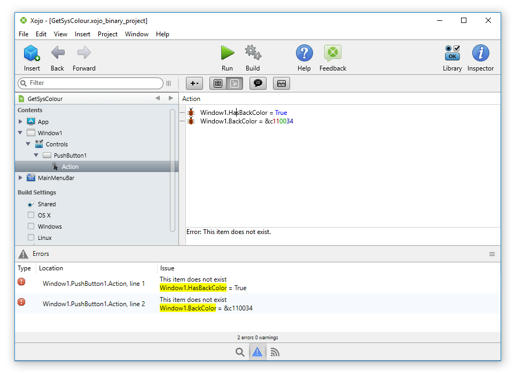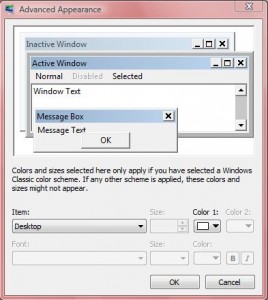

- #COLORCONVERTER NOT FOUND IN SYSTEM.WINDOWS.MEDIA WINDOWS 10#
- #COLORCONVERTER NOT FOUND IN SYSTEM.WINDOWS.MEDIA PORTABLE#
- #COLORCONVERTER NOT FOUND IN SYSTEM.WINDOWS.MEDIA CODE#
- #COLORCONVERTER NOT FOUND IN SYSTEM.WINDOWS.MEDIA WINDOWS#
Language: English (Regional Setting: English)
#COLORCONVERTER NOT FOUND IN SYSTEM.WINDOWS.MEDIA WINDOWS#
Operating System: Windows RT 32-bit (6.2, Build 9200) (9200.win8_gdr.130531-1504) Hello, I noticed that ColorConverter, that is part of the, is missing in Avalon.Media. Is there something I'm over looking in all of this or is this just to be considered normal? even when the scene is static and no activity is happening. I guess my primary concern is the direct impact of Shadows (hard or soft), when enabled. The XAML layer throughout all of this is really very responsive (30fps under all conditions when shadows are on, and 60 when off). (note, throughout the wall clock time, I created the sample data tests from above 1 to 300 cubes)

and it honestly resides at a very steady 20% - 40% on all four cores. plugged on nvidia developer forums as well on microsoft's, but I can only do CPU sampling.

I really wish I could get GPU profiling to work. I attempted to seperate objects and limit physics layers, didn't make a difference. The only GUI item is a fps counter that updates once per second. I limited clipping plane to 200, and the object plane is 10x10 units with the cube being 1x1 unit in size. I've attempted to use different shaders (default, as well as VertexLit) for all objects, with no performance difference, there are no textures at all. with shadows on, it stays pretty low (~12fps). Once Physics are "sleep", frame rates when shadows turned off stablize to maximum rate (60). Vsync: off (but seems to autoenable in store apps) I noticed that ColorConverter, that is part of the, is missing in Avalon.Media. Resolution: medium (other settings seemed to make little difference) Quality settings are set to custom, with following properties: Now you have got the color for the hex you have provided.In my sample tests, I created a very basic scene with a single static plane (with box collider), a single cube (box collider), one directional light (hard shadows, quality by settings), and a camera. Now all that left is to get the color by Calling the method and pass the hex string to it as parameter: var color = GetSolidColorBrush("#FFCD3927").Color SolidColorBrush myBrush = new SolidColorBrush(Windows.UI.Color.FromArgb(a, r, g, b)) If the above explanation got you confused and you just want to convert the hex to Color and don't want to be bothered or to get deep into it just use following method :Ĭreate a method to Convert Hex string to SolidColorBrush: public SolidColorBrush GetSolidColorBrush(string hex)īyte a = (byte)(Convert.ToUInt32(hex.Substring(0, 2), 16)) īyte r = (byte)(Convert.ToUInt32(hex.Substring(2, 2), 16)) īyte g = (byte)(Convert.ToUInt32(hex.Substring(4, 2), 16)) īyte b = (byte)(Convert.ToUInt32(hex.Substring(6, 2), 16))
#COLORCONVERTER NOT FOUND IN SYSTEM.WINDOWS.MEDIA PORTABLE#
In otherwords, the global behaviors, UI and interaction can be reused using the classes available in all frameworks, usually represented by a Portable Class Library (PCL), and each version of your app ( Winforms, Universal, Xamarin, etc) would reuse that shared library for the "core" of the application and the UI (and platform-specific behavior) would be the only part you would implement separately, in each version of the app you want to support. instead, what you want to do is abstract the platform-specific behavior to an interface, and only that part has to be rewritten. However, you don't necessarily have to rewrite the WHOLE THING. net (such as System.Drawing) in a Universal Project. NET framework, and as a result, you can't reuse everything from full. Regardless of their names, all type converters derive from the System. Windows Universal apps don't have the same coverage of namespaces, classes, and APIs as the full. Numerous other converters exist as well: SizeConverter (used to set the Width and. The color to compare to this /// Whether or not the two colors are equal. The issue here isn't the framework version but rather the reduced framework API that is available to Universal Apps. Runtime.InteropServices using System.Text using. You may hit dependency error like 'System.drawing namespace not found' or 'ColorConverter does not exist'.
#COLORCONVERTER NOT FOUND IN SYSTEM.WINDOWS.MEDIA CODE#
net Applications the code above will work, but not in UWP Apps or previous Windows Apps. Something from the following thread from StackOverflow string hex = "#FFFFFF" Ĭolor color = (hex) The most common solution you find will be some thing like the code below which can be found in the following thread in StackOverflow using Ĭolor color = (Color)ColorConverter.ConvertFromString("#FFDFD991") You must have googled to find the solution, or performed a search in Stack-overflow If you have developed apps for Universal Windows Platform there must be situations where you had to convert Hex-code to Color.
#COLORCONVERTER NOT FOUND IN SYSTEM.WINDOWS.MEDIA WINDOWS 10#
Menu Converting Hex to Color in C# for Universal Windows Platform (UWP) 08 March 2016 on C#, UWP, Universal Windows App, Windows 10


 0 kommentar(er)
0 kommentar(er)
